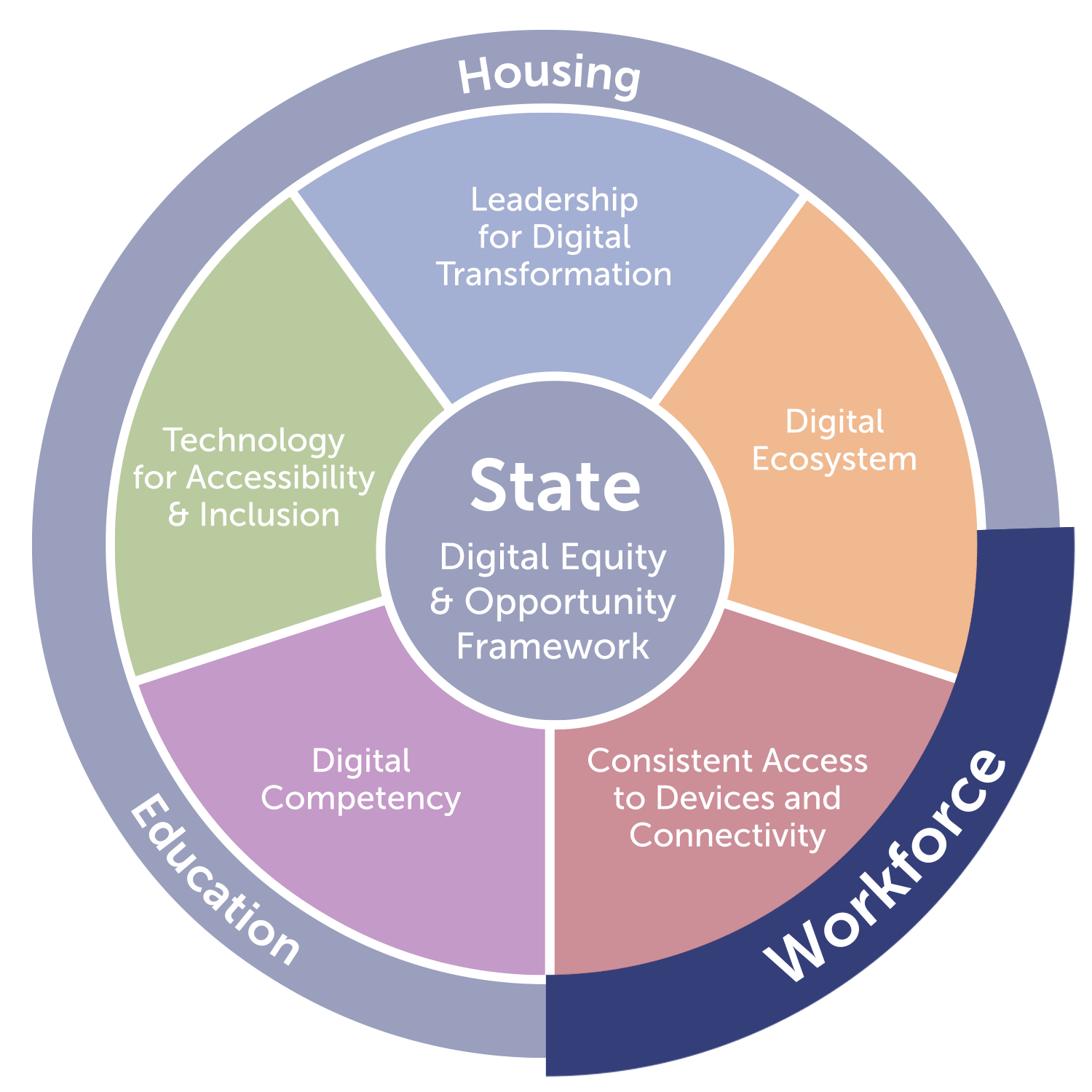These policy recommendations and initiatives are designed to empower unserved, underserved, and marginalized populations, including racial and ethnic minorities, to acquire and leverage essential digital skills for successful participation in the digital economy.

Adopt a proven system to certify quality and consistency in how credentialing and micro-credentialing programs are developed and credentials awarded and recognized across the state, particularly from community colleges, public and private universities, and non-credit providers (National Governors Association).
Leverage strategic Public/Private Partnerships to develop and validate the specific skills and competencies in credentialing and micro-credentialing programs. This will promote skills-based hiring practices that will build a dynamic workforce ready for the future (Winters, 2024).
Develop/adopt standards to expand and enhance CTE programs to include opportunities for caregivers and adult learners, ensuring that training is aligned with current job market demands and accessible to people at various life stages. This could involve evening classes, online courses, and apprenticeships that accommodate the schedules of working adults (Janicke-Bowles 2023), (The Digital Navigator Model 2024), (NSC).
Establish new or support existing state-funded hubs in rural areas that provide free and secure high-speed internet, education, workforce training, and workstations, available beyond school and business hours.
Develop/adopt standards for digital skills training and certification to enhance workforce readiness and adaptation to technological advancements (Janicke-Bowles 2023), (Skills-Driven State Community Of Practice 2022).
Create requirements for career pathways leading from K-12 to higher education, especially community colleges, culminating in workforce credentials. This will break down the silos between different levels of education and workforce development, allowing individuals to pursue careers in technology and digital industries through multiple learning experiences, such as apprenticeships, externships, internships, and vocational training at all levels of their educational journey (Community College Student Perspectives on the Future of Work 2023).
Offer incentives for employers to invest in providing reasonable accommodations and accessible technology devices for employees with disabilities as mandated by the Americans with Disabilities Act (ADA) (National Council on Disability 2007).